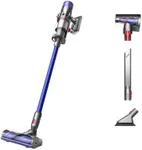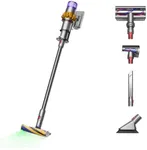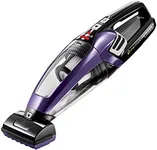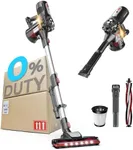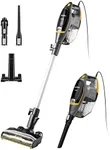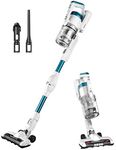Buying Guide for the Best Small Vacuum Cleaners
When choosing a small vacuum cleaner, it's important to consider your specific needs and preferences. Small vacuum cleaners are great for quick clean-ups, small living spaces, or for those who need a lightweight and easy-to-store option. To make the best choice, you should look at several key specifications that will determine how well the vacuum cleaner will perform for your particular situation.Suction PowerSuction power is a measure of how effectively the vacuum can pick up dirt and debris. This is important because stronger suction means better cleaning performance. Suction power is often measured in watts or air watts. For light cleaning tasks or hard floors, lower suction power (around 100-200 watts) may be sufficient. For carpets or more demanding tasks, higher suction power (200+ watts) is preferable. Consider the types of surfaces you'll be cleaning most often to determine the right suction power for you.
WeightThe weight of a vacuum cleaner affects how easy it is to maneuver and carry around. This is especially important for small vacuum cleaners, which are often chosen for their portability. Lightweight models (under 5 pounds) are ideal for quick clean-ups and easy storage. Slightly heavier models (5-10 pounds) may offer more power and features but can still be manageable. Think about how often you'll need to carry the vacuum up and down stairs or move it around your home.
Dustbin CapacityDustbin capacity refers to how much dirt and debris the vacuum can hold before it needs to be emptied. This is important because a larger capacity means less frequent emptying, which can be more convenient. Small vacuum cleaners typically have smaller dustbins, ranging from 0.3 to 1 liter. If you have a small living space or plan to use the vacuum for quick clean-ups, a smaller capacity may be sufficient. For larger areas or more frequent use, look for a model with a larger dustbin.
Battery LifeFor cordless vacuum cleaners, battery life determines how long you can use the vacuum before needing to recharge it. This is important for uninterrupted cleaning sessions. Battery life can range from 15 minutes to over an hour. If you have a small area to clean or need the vacuum for quick tasks, a shorter battery life (15-30 minutes) may be adequate. For larger spaces or longer cleaning sessions, look for a model with a longer battery life (30+ minutes).
Filtration SystemThe filtration system in a vacuum cleaner helps to trap dust, allergens, and other particles, improving air quality. This is especially important for people with allergies or asthma. Basic filters are suitable for general cleaning, but for better air quality, look for HEPA (High-Efficiency Particulate Air) filters, which can capture 99.97% of particles. Consider your sensitivity to dust and allergens when choosing the right filtration system.
Attachments and AccessoriesAttachments and accessories can enhance the versatility of a vacuum cleaner, allowing you to clean different surfaces and hard-to-reach areas. Common attachments include crevice tools, dusting brushes, and upholstery tools. If you have specific cleaning needs, such as pet hair removal or cleaning tight spaces, look for a vacuum that comes with the appropriate attachments. Think about the types of surfaces and areas you'll be cleaning to determine which accessories are most useful for you.


